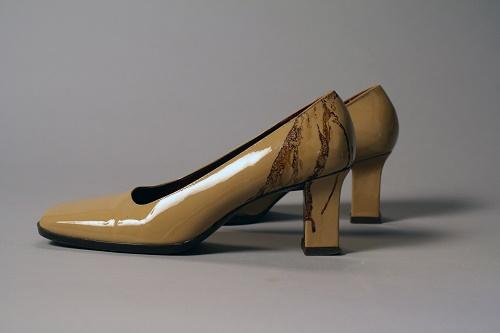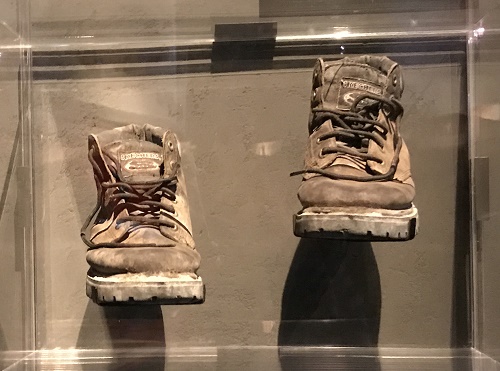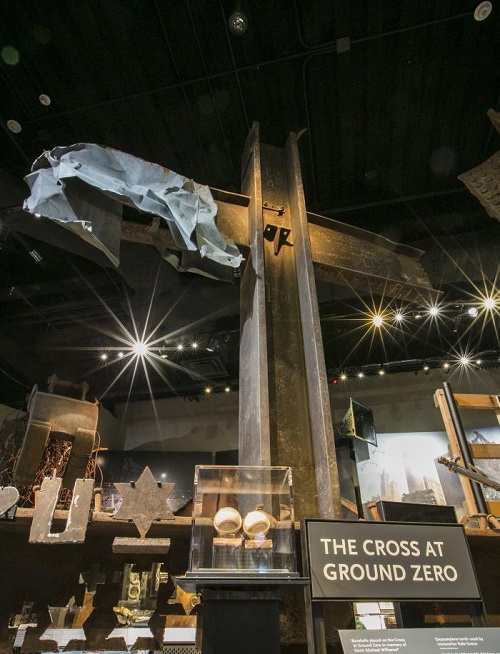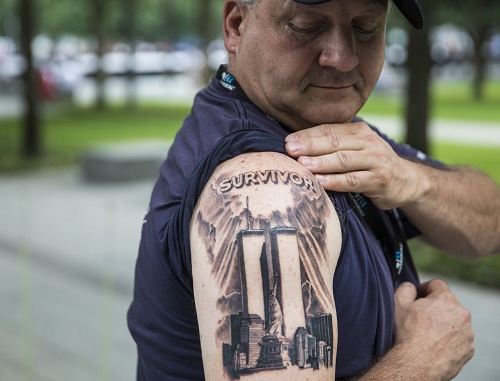The 9/11 Memorial Museum is Home to the Shoes of Survivors
The 9/11 Memorial Museum is Home to the Shoes of Survivors

To walk a mile in someone’s shoes is to understand what they have endured. Three pairs from the 9/11 Memorial Museum’s collection – blood-stained heels, muddy work boots and hospital slippers – tell three varied tales of survival.
On the morning of 9/11, Linda Raisch-Lopez put on a new pair of heels before heading to work on the 97th floor of the South Tower. While at her desk, she heard a booming noise and then rushed to a window to see flames bursting out of the North Tower. She removed her shoes and began a calm descent down the stairwell until the South Tower was struck.
Shaken from the attack, Raisch-Lopez ran as fast as her feet could carry her down to the concourse level and out onto the plaza. She put her heels back on and walked to the ferry terminal at the 39th Street Pier that would deliver her back to her family in New Jersey. Her feet were cut and bleeding onto her shoes after the three-and-a-half mile journey to the ferry.

As people fled from the World Trade Center, New York City Police Officer John Stiastny and two thousand other cops responded to the terror attacks. Stiastny arrived at the scene at 1:00 p.m. wearing a pair of leather boots that bore a pin of the NYPD department that he belonged to, the Organized Crime Control Bureau.
While helping in the rescue and recovery effort, Stiastny was struck with falling debris. He was taken to Bellevue Hospital and treated for an injured neck and a broken leg. Like other survivors of the attacks, Stiastny understood the historic significance of the apparel he wore that day and saved his shoes.

Udayan Gupta was working from his home office across from the World Trade Center. When the South Tower fell, his apartment windows shattered, and his home filled with debris. Gupta immediately evacuated in such haste that he forgot to put on shoes.
After the collapse of the towers, Gupta boarded a ferry heading to New Jersey where he experienced severe chest pains. Once he arrived in Jersey City, Gupta traveled barefoot to a hospital, where a nurse gave him the only pair of shoes she could find – a pair of slippers that he could wear on his return trip to New York.
By Mikayla Sciscente, 9/11 Memorial Marketing Intern
Previous Post
Priest Details WTC Cross’ 13-Year Journey in New Book

Father Brian Jordan first laid eyes on the conspicuous object on Sept. 23, 2001, after celebrating Sunday Mass for the Ground Zero rescue and recovery crew.
Next Post
Tattoos Help Survivors and First Responders Cope with 9/11 Trauma

For survivors and first responders, there’s no clear path to healing after the life-changing trauma of 9/11. Some take to art, exercise or charity.